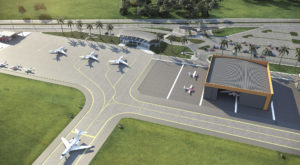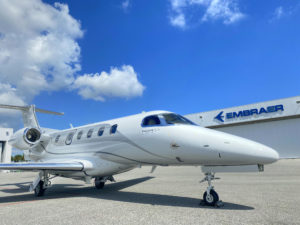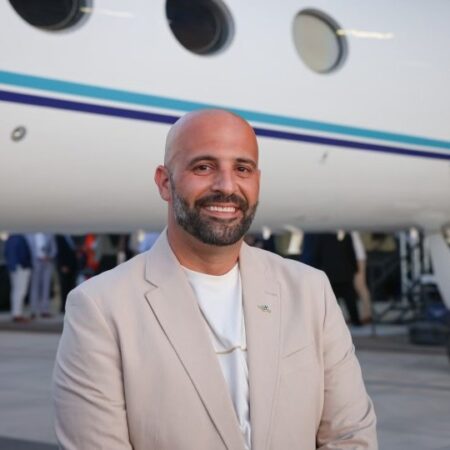Words by Eugene Gerder
Brazil’s business aviation market has a good chance to grow this year thanks to strong demand for business flights and the country’s relatively strong economic situation.
Business aviation plays an important role in Brazil. This is reflected by the sector’s status as one of the world’s largest business aviation markets, both in terms of the overall fleet and levels of flight activity. In addition, the poor level of development of road infrastructure in the country, particularly in its major cities has contributed to the development of private aviation in the region.
According to recent data provided by the Brazilian Association of General Aviation (ABAG), the average number of business flights in the country is estimated at 30,000 per month, 15% higher compared than in 2019. The industry has exceeded pre-pandemic figures and is still growing.
The Covid-19 pandemic led to a 50% drop in the Brazil business aviation market’s activity. Although bad, this
was not as low as the 90% drop suffered by commercial aviation in the country.
Brazil is home to the world’s third largest fleet of business jets with 764. There are around 2,000 business aircraft in the country including turboprops. The Brazilian business aviation sector connects almost 5,225 municipalities across the country. For comparison, commercial aviation serves only 115 airports in Brazil.
For comparison Mexico has a fleet of approximately 1000 business aircraft, around half of the Brazilian fleet.
Urban connections

Turboprops account for more than 60% of the business aircraft fleet in Brazil – the highest proportion among the 15 main markets in the world.
Most local analysts and operators expect the market has potential for further growth this year, while particular attention should be paid for the development of business aviation infrastructure of the country.
A significant part of business aviation traffic in Brazil is concentrated in the country’s largest cities of Sao Paolo and Rio de Janeiro. However, demand for aviation services is growing in other parts of the country.
Fabio Rebello, chief commercial officer of Synerjet, a Brazil-based seller and distributor of business jets, confirms this. He says, “The business aircraft market in Brazil experienced significant growth in 2022 and shows no sign of slowing in the short term.
“Driven mainly by agribusiness and an important diversified industry, Brazilian entrepreneurs constantly need to travel to Europe, the USA and Asia to sell their products. There is nothing better than business aviation to accomplish these goals in the most productive way.
“Brazil is a very large country underserved by commercial airlines, so private aviation and business aviation are fundamental to the development of the country. Charter operators and owners are reaching out to small and midsize locations and providing services vital to business such as banking, telecommunications and franchises that would not be there otherwise.”
Rebello believes that as Brazil continues to grow and develop, the need for business aviation will continue to increase. He says, “Although inflation, exchange rate, finance availability, interest rates and potential recession in Europe and the US present risks, Brazil has a large population within a large territory presenting an active consumption market of its own that can reduce external impacts for a while.
“The authorities are aware of the crucial economic impact of business aviation in Brazil and have simplified rules to support activities and grow the required skilled labor. They are also looking into ways of supporting the rapidly growing area of unmanned aerial vehicles.”
OEM interest
In the meantime, the Brazilian market ranks highly in the interests of business jet manufacturers, the majority of which consider it a priority growth market.
One such company is Gulfstream, which has recently significantly strengthened its presence in the Brazilian market. The Gulfstream fleet in Latin America has grown by more than 50% in the last 10 years.
Scott Neal, Gulfstream’s senior vice president of worldwide sales says, “There are more than 220 Gulfstream aircraft in-service throughout Latin America and more than 50 in Brazil. We saw steady demand for Gulfstream aircraft there in 2022 and expect that to continue in 2023.”
Gulfstream is optimistic about continued demand for its aircraft in Brazil. Neal says, “Our product line offers a mix of size and range to suit a variety of operator needs, whether they are flying domestically or taking trips halfway around the world.
“The G650 and G650ER have been popular in the region since they were introduced in 2008, and we are seeing great interest in the G500, G600, G700 and G800 – the G700 offers the most spacious cabin in the industry, and the G800 offers the longest range at the fastest speeds with great cabin size comparable to the G650ER, all characteristics ideal for Brazilian operators.
“The G400 offers cabin size and comfort not seen on any other aircraft in its class – it’s ideal for domestic travel and also capable of Transatlantic flights.”
Neal believes that continued advocacy about the benefits of business aviation and investments in business aviation infrastructure in Brazil will fuel further growth for the sector in the region.
Embraer’s range

Plans for further development in the domestic market are also confirmed by Brazilian aircraft-maker Embraer. Headquartered in São José dos Campos, the company is one of the leading players in the Brazilian business aviation market. Its Phenom 300 aircraft has been the world’s best seller in the light jet segment for 10 consecutive years.
Building on this success, in 2018 the manufacturer launched the new Praetor 500 and Praetor 600 jets, medium and large jets introducing longer ranges in their categories of 3,740 miles (6,000km) and 4,480 miles (7,200km).
In terms of infrastructure, industry insiders expect a major boost for further growth to be provided by the construction of a business aviation hub in Goiás, in the metropolitan region of Goiânia. Called Antares, building work began during July last year. It will be constructed in stages, with the commissioning of the first stage consisting of a runway, boarding and landing area and 1,500m2 (16,000ft2) of hangarage scheduled for 2024.
The country’s first FBO dedicated to business airport only opened in 2019. São Paulo Catarina Executive Airport is a flagship facility for serving the needs of business aviation in the country. The airport is located on a 2 million square meter area 60km (37 miles) west of the city and has a 2,500m (8,200ft) runway capable of handling large business jets such as the Lineage 1000E and Dassault Falcon 8X for international flights.

Building the new airport became an urgent need because of a lack of space in the main airports of São Paulo, Guarulhos and Congonhas airports, which had become heavily congested. A third aerodrome located in a region only has limited flight permissions. Owners and customers of business aircraft were frequently required to use airfields far from the city without adequate infrastructure.
Until 2019 private investors had little interest in the development of Brazilian airport infrastructure for private jets, with most funding coming from the Brazilian Government. The launch of Catarina Executive Airport has contributed to an influx of investments in the sector.
Business helicopters
Another feature of the Brazilian market is the high amount of VIP helicopter activity. According to ABAG statistics and media reports, the city of São Paulo currently has the largest fleet of VIP helicopters in the world, consisting of between 450 and 500 helicopters. For comparison there are around 120 helicopters operating in New York. These helicopters are served by more than 40 helipads spread throughout the metropolitan area of the city. São Paulo even has a tower for controlling VIP helicopter traffic and is the only city in the world with this type of service.
Most analysts expect the demand for business aviation in Brazil to continue to grow most significantly on the vital business route between São Paulo and Rio de Janeiro.
The ongoing growth in demand also creates an opportunity for the development of aircraft sharing service segment, which registered an increase of almost 50% in 2021-2022 in Brazil.






